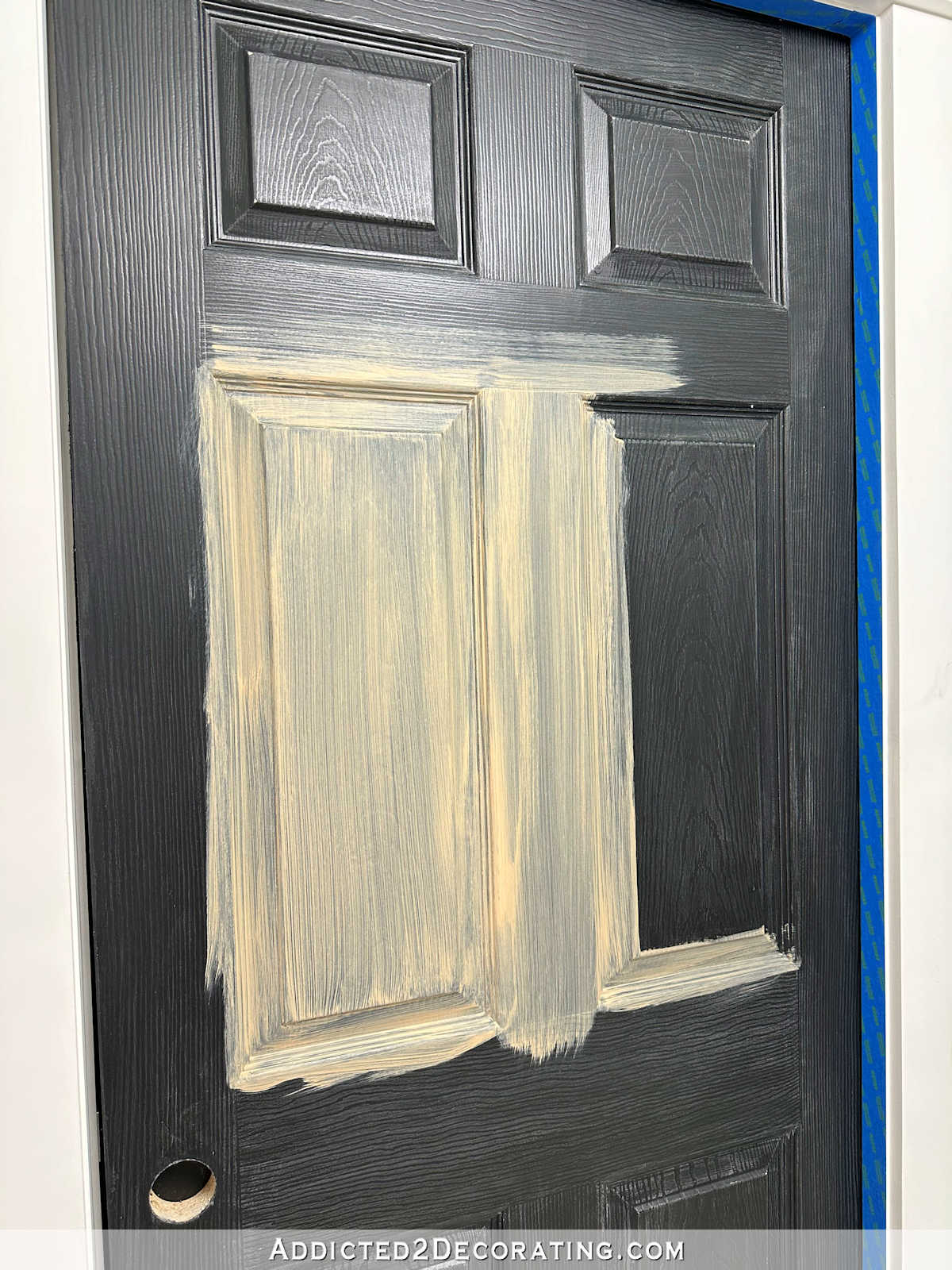[ad_1]
A few days ago, I shared that if I could do anything I wanted with the bathroom door and the storage closet door in the back entry of my studio, my preference would be for them to be a medium to dark stained wood. Walnut would be perfect. You can read more about that, as well as other options, here. But here’s a look at the final vision I had for this area, and how it would coordinate with the mural wall.
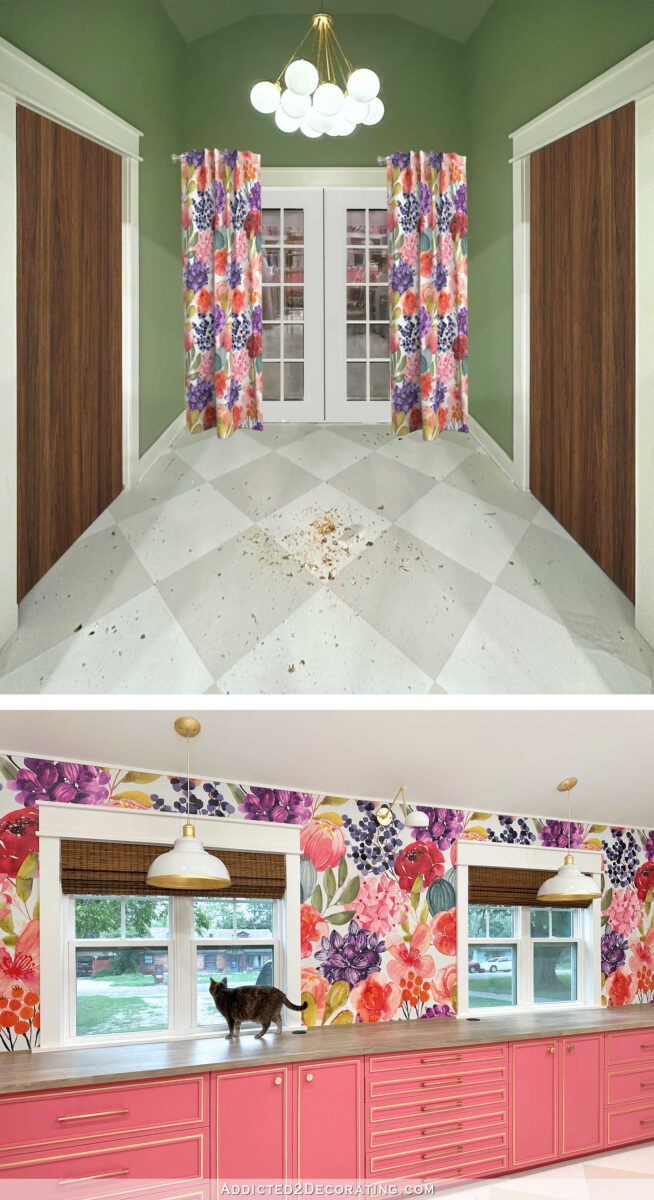
So after considering some different options to get get that walnut look (everything from a faux finish to purchasing actual walnut doors, and everything in between), I decided to start with the cheapest DIY option. I purchased a product called Retique It, which is a primer that contains actual wood particles in it. You’re supposed to be able to use this primer on pretty much any surface, and then stain it to make it look like real wood.
I almost named this post “My Vote Of “No Confidence” In Retique It,” but I realized that probably isn’t a fair assessment. After all, I didn’t use their full line of products (they sell their own brand of stains as well). But it’s definitely fair to say that the overall process that I used is not going to result in the look I want, so I didn’t even attempt to finish. This was not one of those “trust the process” types of projects. I knew almost immediately that it wasn’t going to work, so even though I didn’t finish it, I did way more than I needed to do in order to verify that it just wasn’t going to work out.
The doors that I currently have on the half bathroom and the storage closet are these standard six-panel hollow core doors from Home Depot. They come pre-primed and ready to paint, and they have this fake wood grain look to them.
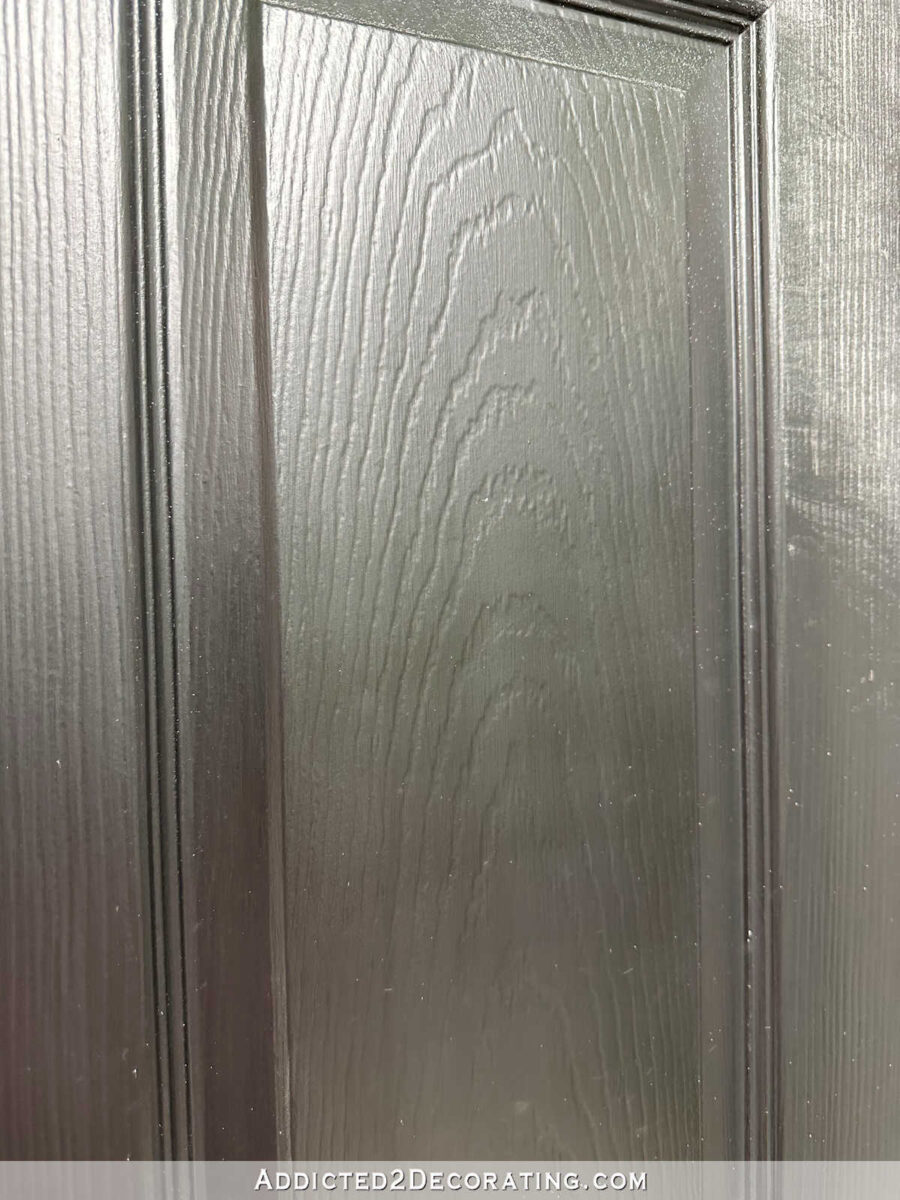
The doors have about two coats of black paint on them, and then they’re clear coated with General Finishes High Performance Topcoat. I clear coated them so to make the black easier to clean. So before I began, I gave the doors a very quick sanding with 220-grit sandpaper. And then I began brushing on the Retique It primer.
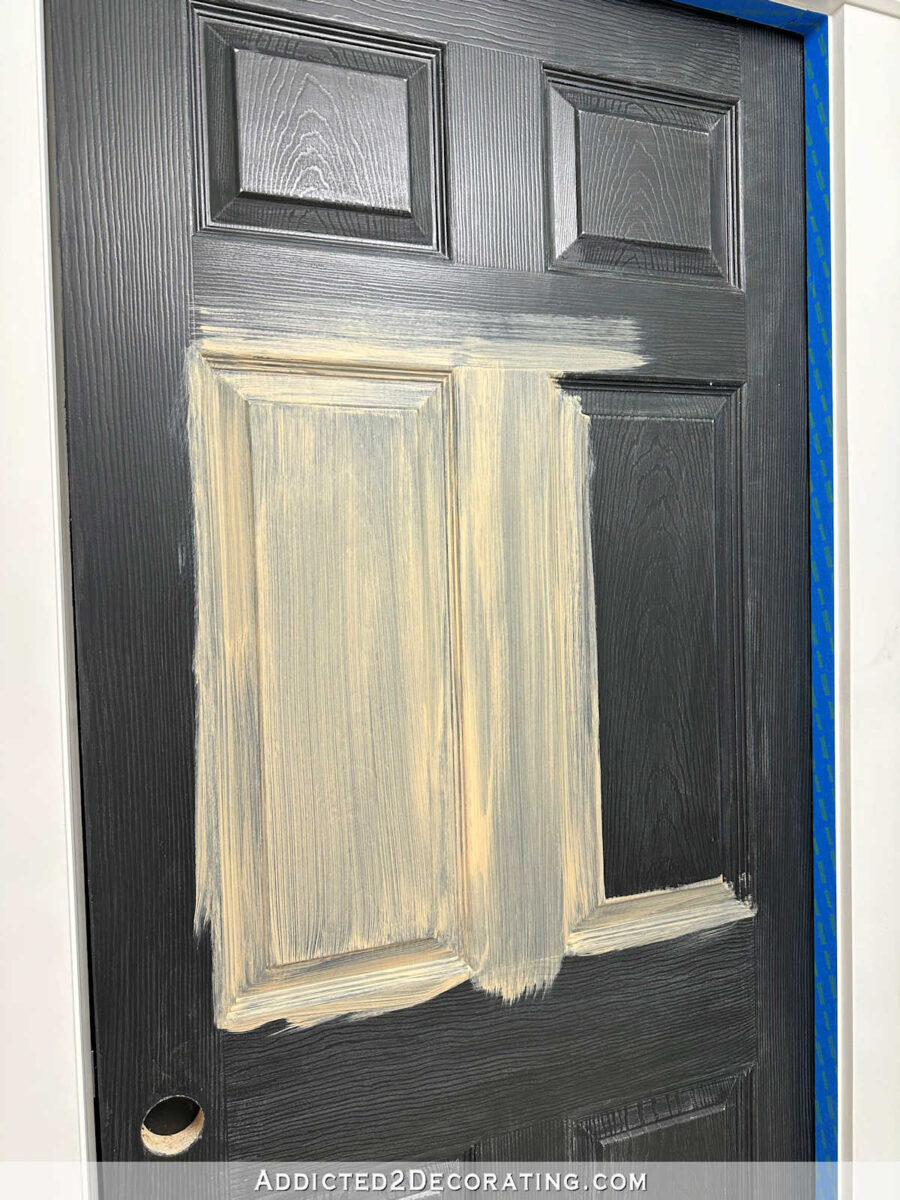
My initial impression was that I was shocked at how thin the product is. With it being so thin, I had a hard time avoiding runs and drips. You can see below just how thin the first coat went on. The panel that looks more solid brown has three coats on it. I didn’t want to waste time doing the whole door if the product wasn’t going to cover, so I just used that one panel to test out how many coats it would take to completely cover.
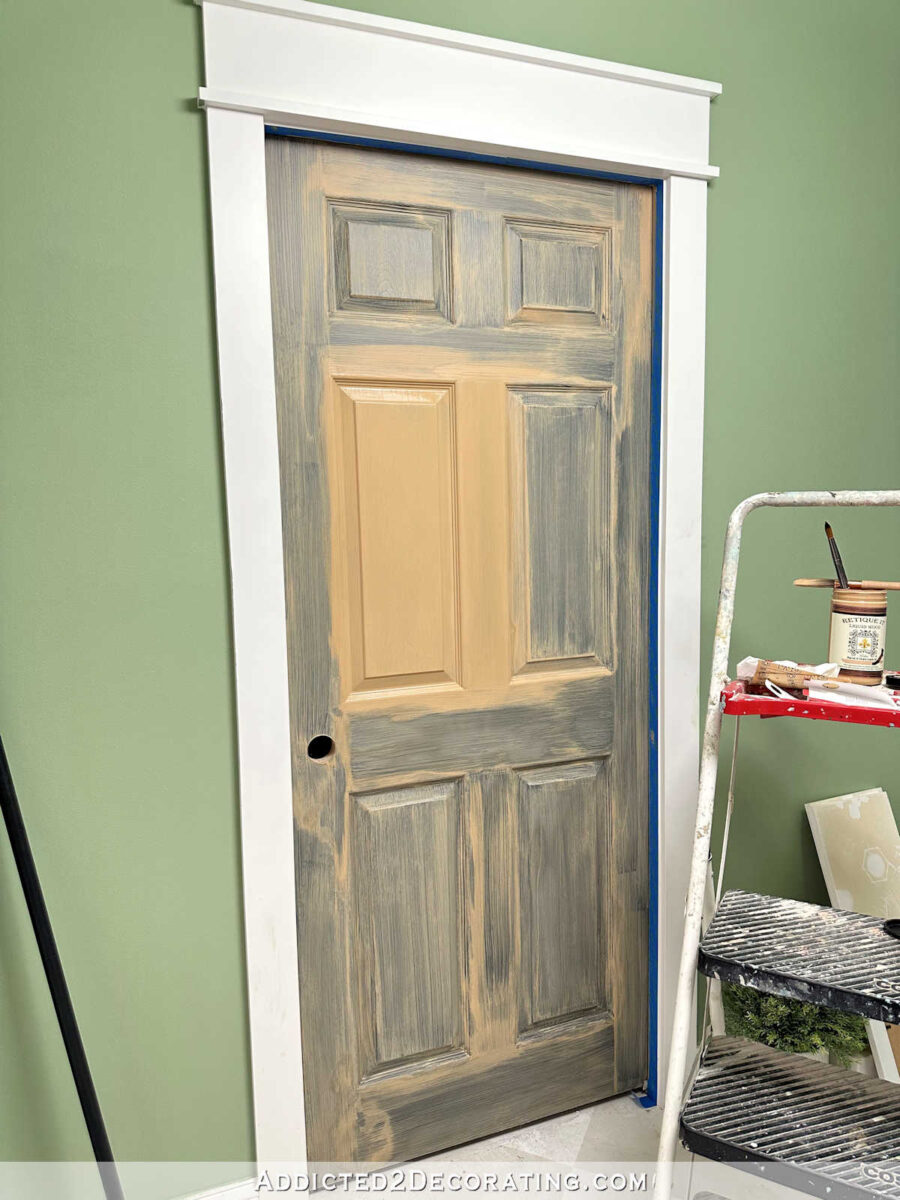
In all, I ended up doing four coats of primer to completely cover the door. And those four coats took about 1/3 of the 32-ounce container of Retique It. That was disappointing. That means that if I wanted to do both sides of both doors, I’d have to purchase a second container of Retique It, at the cost of $55 per 32-ounce container.
After the primer was completely dry, I did a little sanding to get rid of drips and runs, and also to see if I could bring out some of that faux wood grain in the doors. I thought maybe I could use that existing faux wood grain to my advantage to make the doors actually look like wood when I stained them.

As far as the stain goes, I ended up using Behr water-based stain. The Retique It website say not to use penetrating stain, like Minwax. Instead, they recommend a particular Varathane stain, which used to be available at Home Depot. Unfortunately, the Home Depot here no longer carries that type of Varathane stain. They only carry Varathane stain that is labeled “penetrating stain”. They did have another line of oil-based stain that wasn’t labeled “penetrating”, but they didn’t have any of the colors that would have worked for my doors.
So my only option was Behr water-based stain. I had so much success using that stain on the storage cabinet in our bathroom, so I felt like it would work here as well. And initially, I actually thought it was going to work!
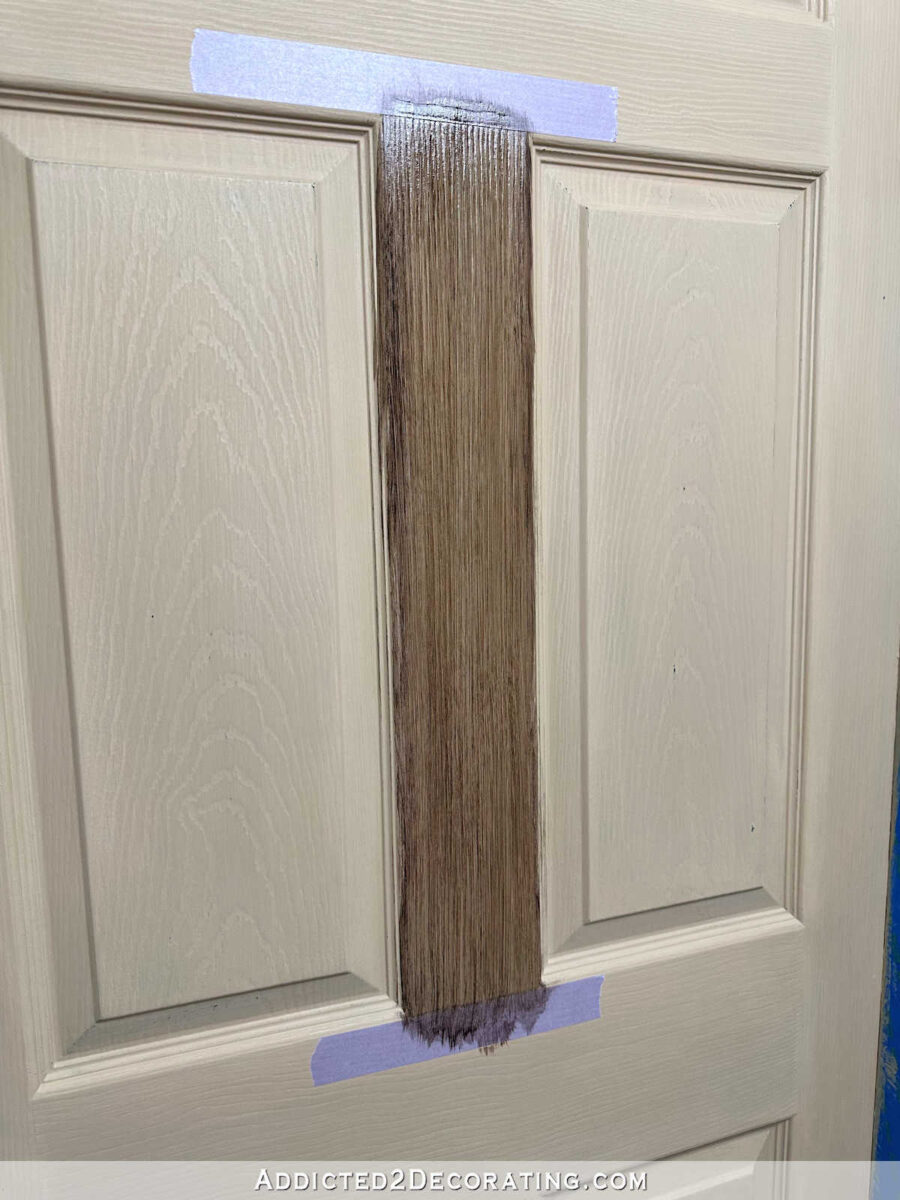
My plan was to brush on the Dark Walnut first, let it sit for a couple of minutes, and then wipe off the excess so that the dark settled into the faux wood grain of the door. And then once that was completely dry, I’d go back over it with a coat of Special Walnut. Here’s what it looked like after letting the Dark Walnut sit for a minute and then wiping off the excess. I was feeling hopeful!
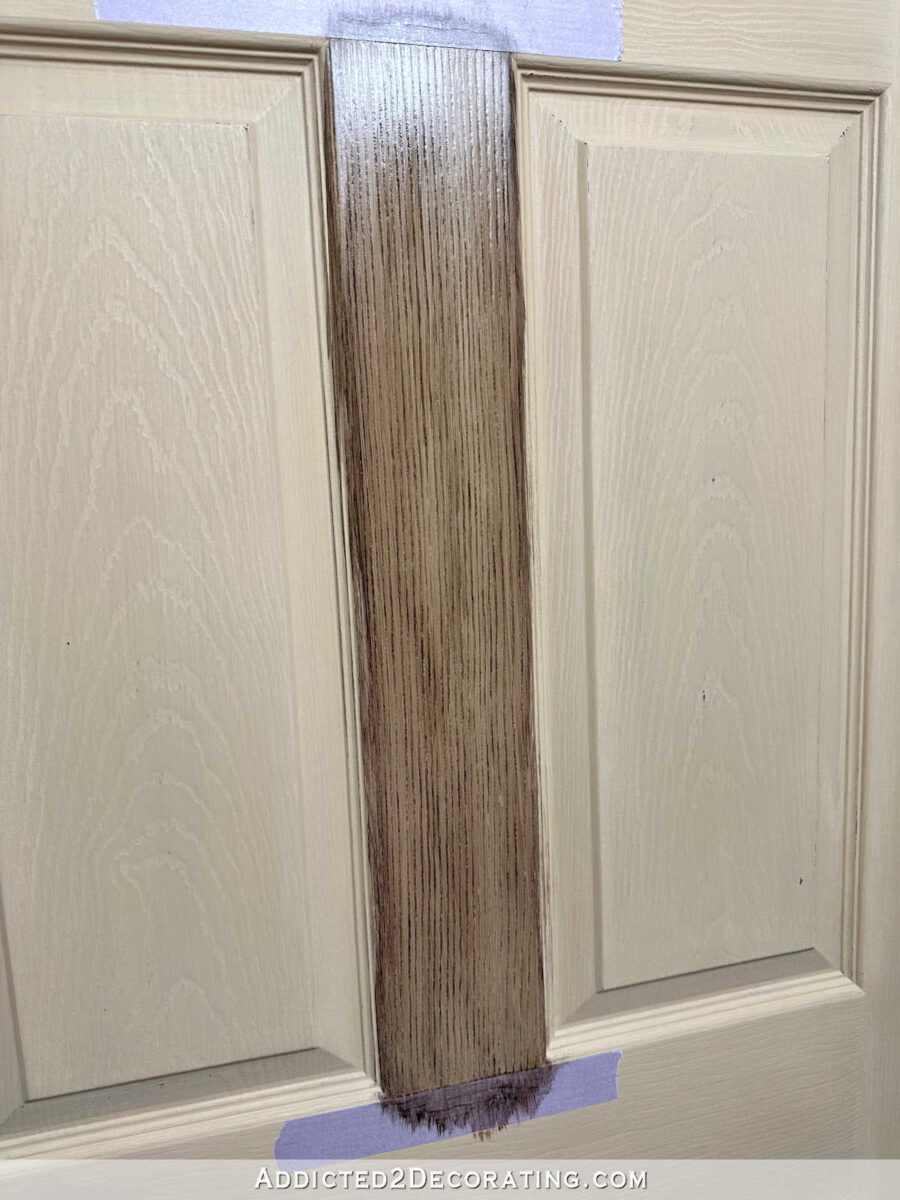
But then I tried putting the stain on the first panel, and that’s when the plan fell apart. Quite honestly, I didn’t really feel like the Retique It was actually absorbing stain. I thought that was the whole purpose of having primer that is made up of over 65% recycled wood. I expected the wood in the primer to absorb stain much better than it did. This just looked like it was going right over the surface, just like it would over any other painted or primed surface, and it created the streakiest, splotchiest mess ever. No matter what I did, I couldn’t create any kind of smooth, even look, even after wiping away the excess stain.
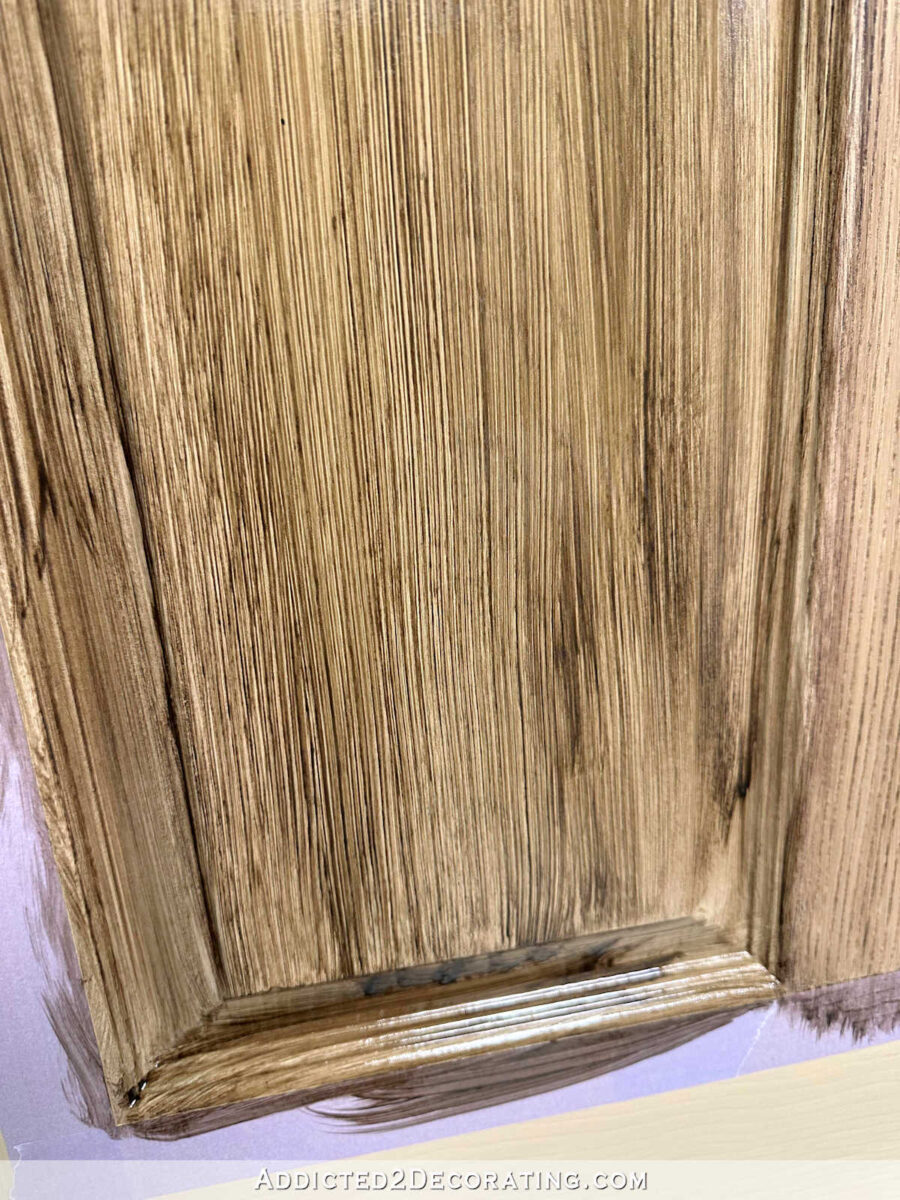
I was disappointed, but I knew that I was never going to get to a finished look that I was satisfied with using this process or these products, so I just stopped at this point.
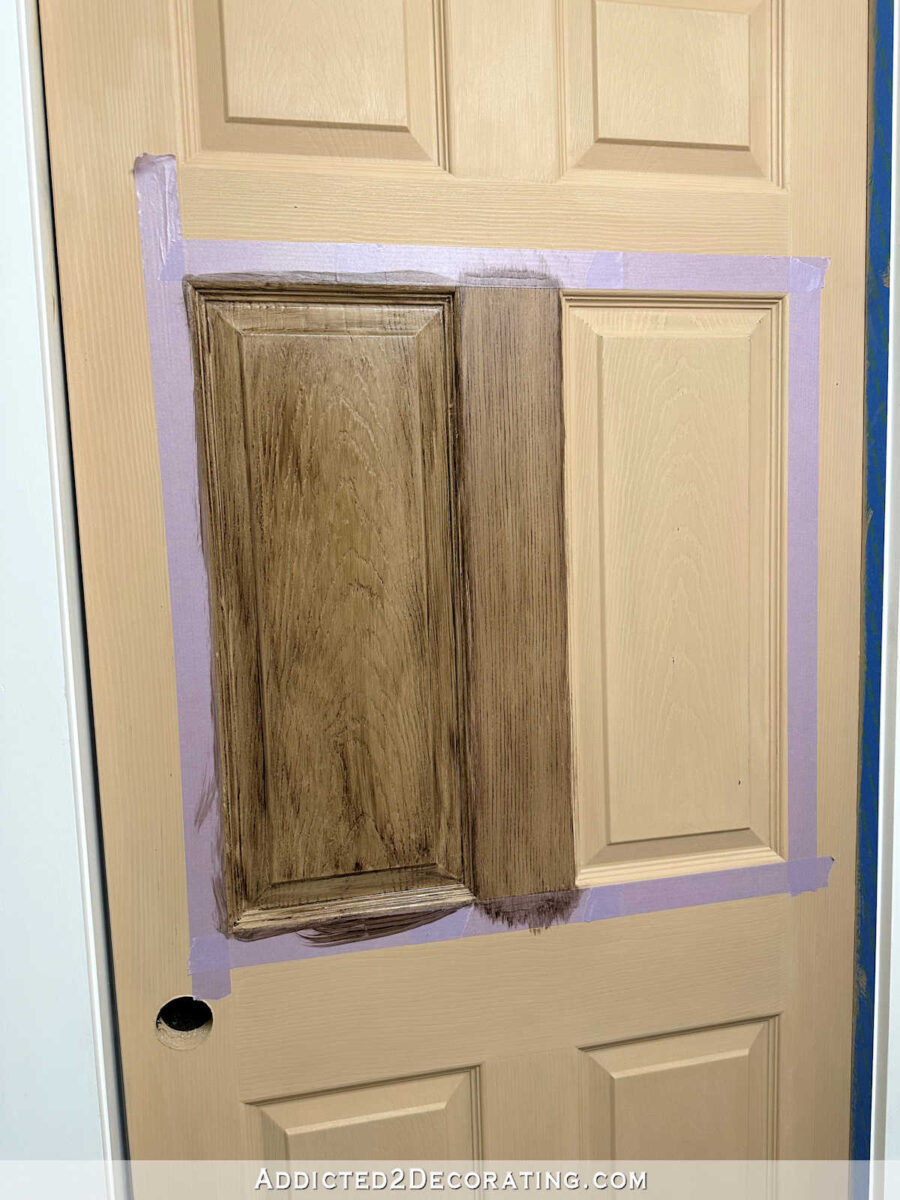
So is my vote of “no confidence” in Retique It? Well, I’m not sure at this point, and I think it would be unfair for me to say that the problem is Retique It. I’d have to use their full line of products on a project to make that kind of honest assessment. Maybe it’s just the fact that I was trying to use it on a six-panel door instead of a flat surface like a table top. Maybe the problem is the stain I used. I don’t really know.
But what I can tell you is that my vote of “no confidence” applies to my whole process in general. And I also have no confidence that I can make these cheap six-panel, pre-primed doors look like wood in any convincing way, regardless of the products or faux finish process I use.
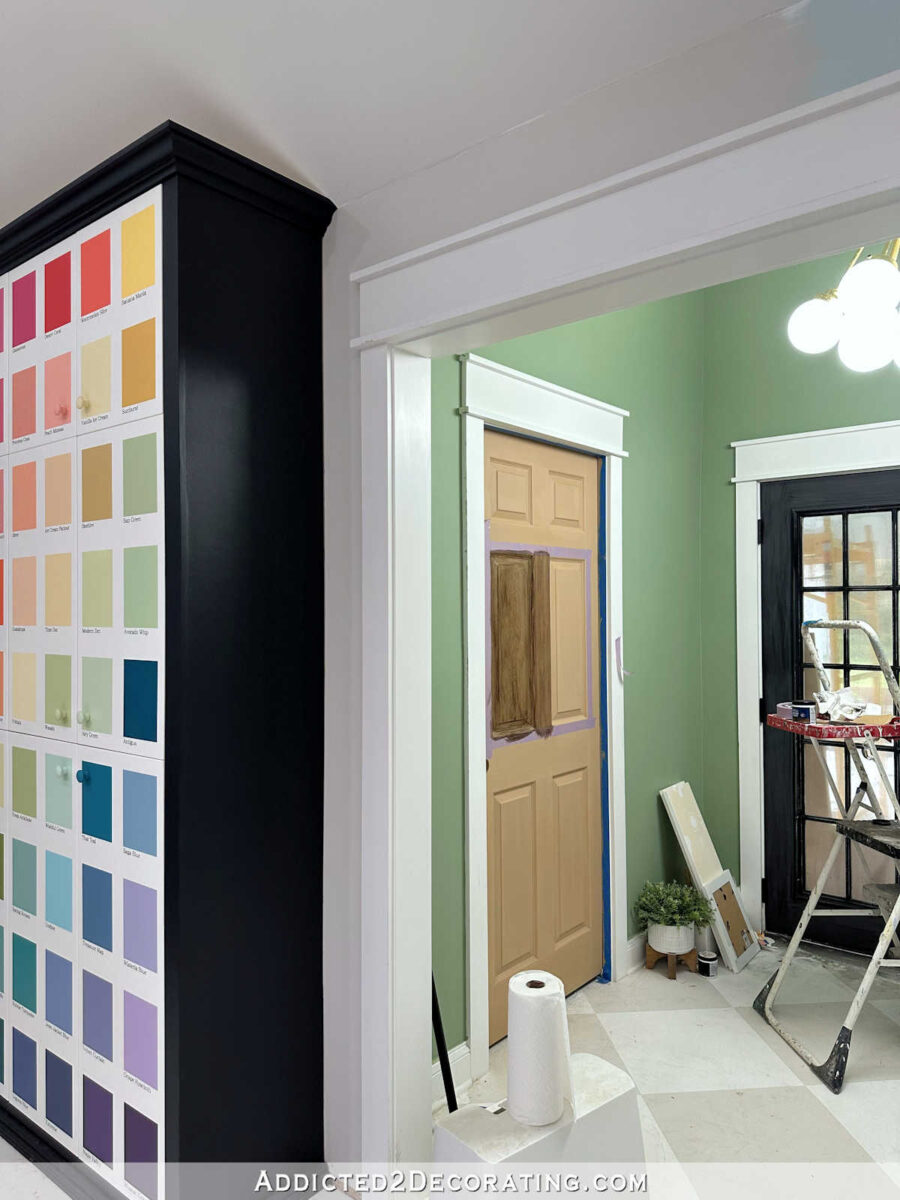
The two things that I like about my mock up are (1) the flat panel doors, and (2) the distinct look of the grain of walnut veneer.
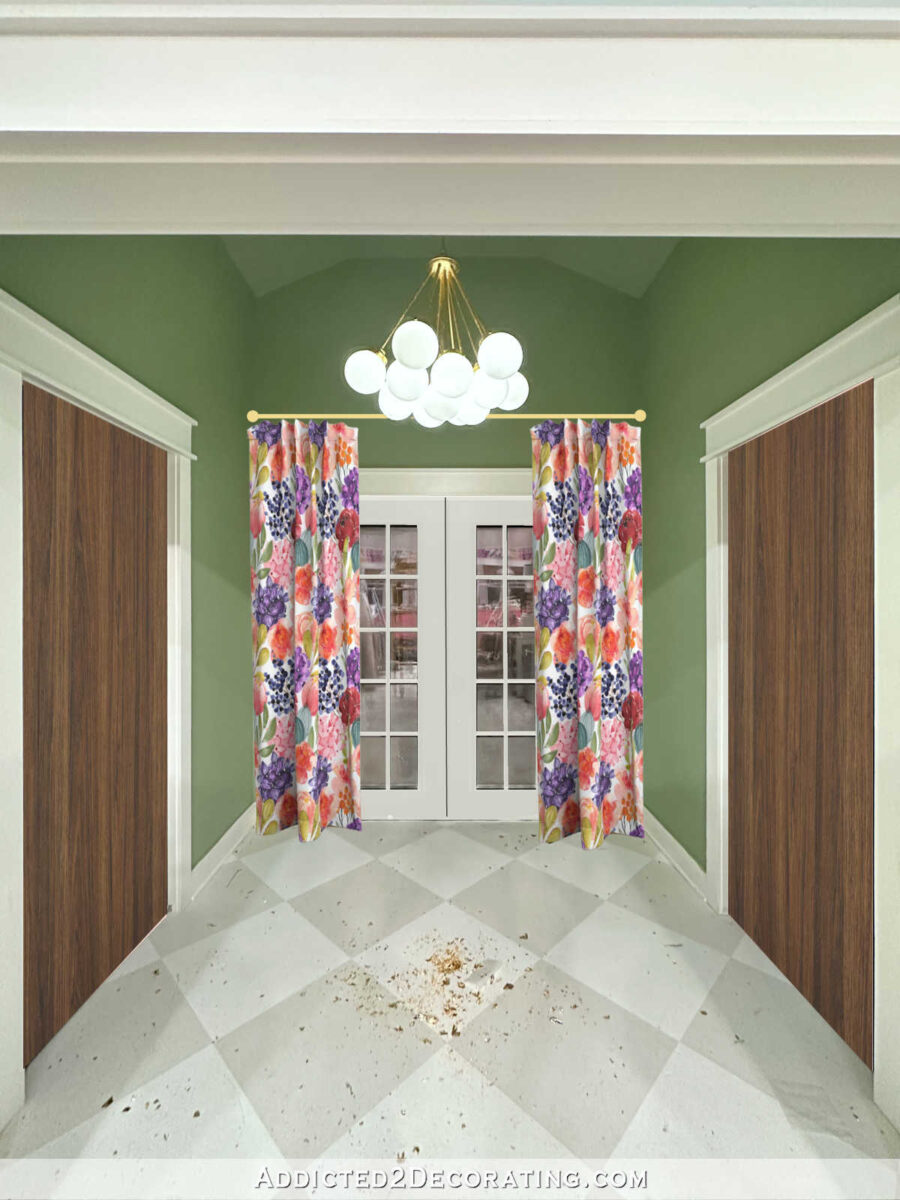
Obviously, it’s not possible to make a six-panel door look like a flat slab door without completely covering it, but I also don’t think it’s possible to replicate that look of walnut grain using anything other than real walnut veneer. But it’s that grain that makes it look so special, like on the walnut vanities and storage cabinet in our bathroom.
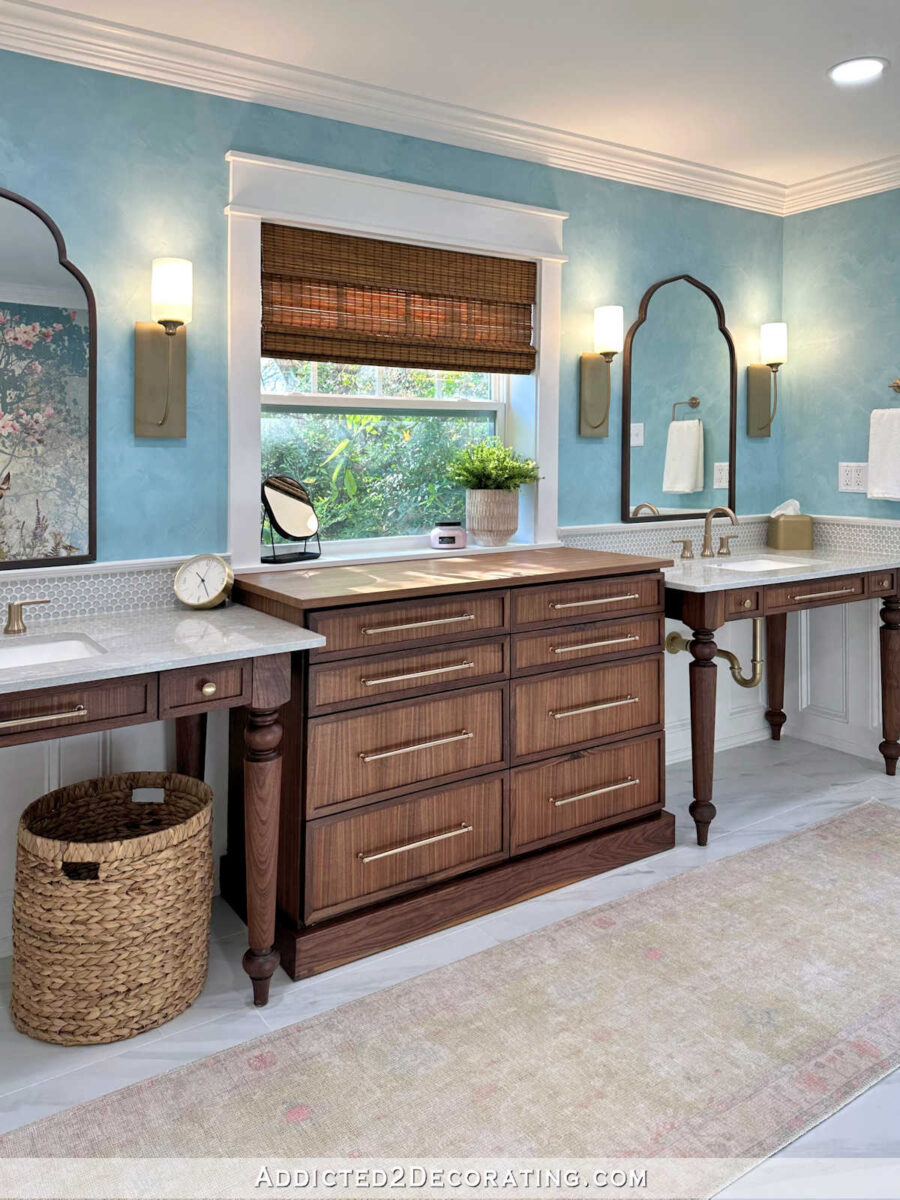
I think the only option to get that look is to use real walnut veneer. There are no other short cuts. And quite honestly, I’m not sure if I’m so set on walnut doors that I’m willing to swap out the existing doors for new ones when what I have is perfectly good, perfectly usable, and already installed and trimmed out. (In order to swap doors, I’d have to remove trim since these are pocket doors.).
While it’s fun to dream about the ideal look and design, sometimes chasing that perfect look and design really isn’t worth the money or the effort it would require. So now I’m back to square one on this. Maybe I’ll just gold leaf the doors. ? No, seriously. Would that work? Someone mentioned it the other day, and my initial reaction was, “That’s ridiculous!” And yet, I haven’t been able to stop thinking about gold leafed doors ever since then. I’m so tempted to try it! ?

Addicted 2 Decorating is where I share my DIY and decorating journey as I remodel and decorate the 1948 fixer upper that my husband, Matt, and I bought in 2013. Matt has M.S. and is unable to do physical work, so I do the majority of the work on the house by myself. You can learn more about me here.
[ad_2]
Source link

